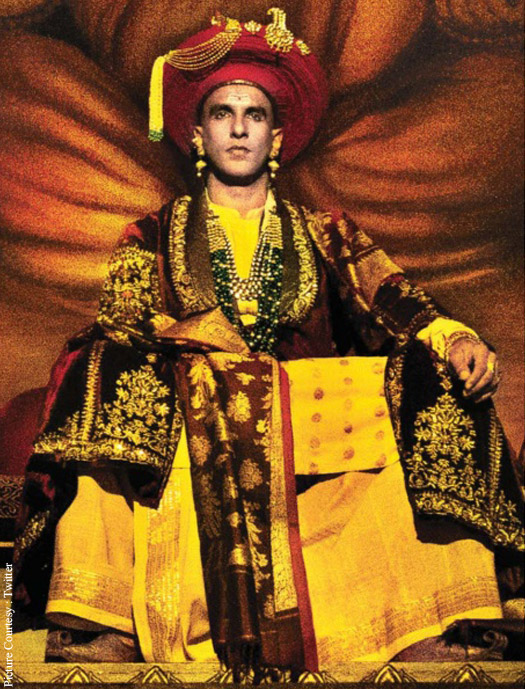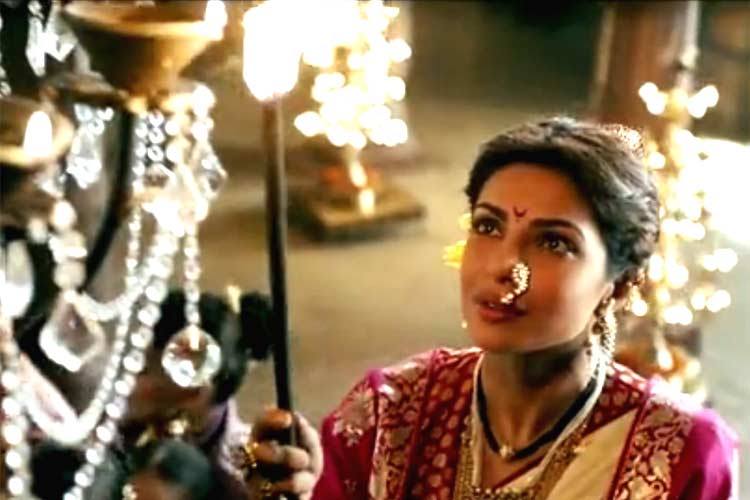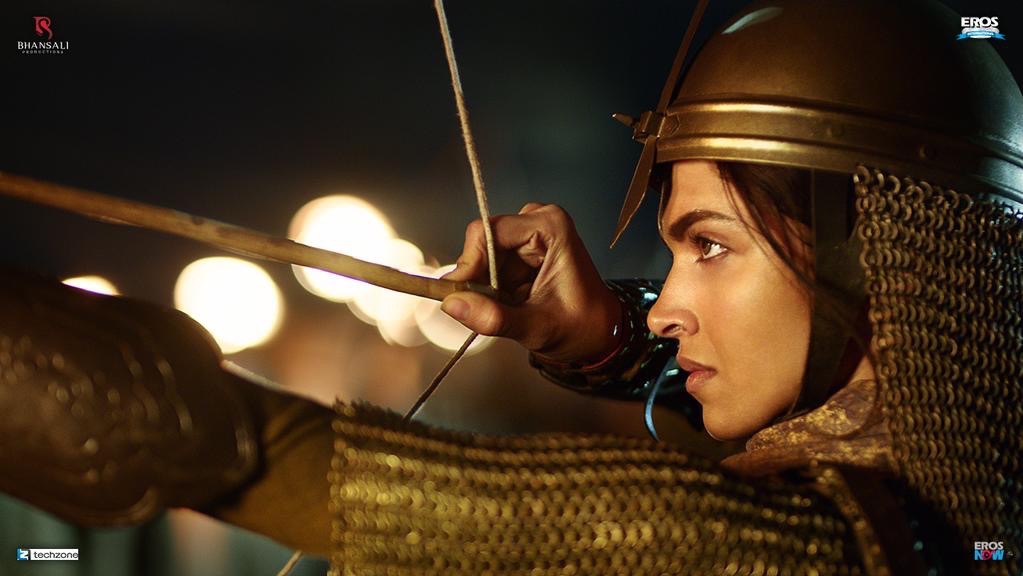The Grandest Vision since Mughal-e-Azam
Rating: 4/5
Bajirao Mastani is a story of eighteenth century Maratha warrior and his second wife Mastani.
When you are watching a Sanjay Leela Bhansali movie, you can be certain of a few things. It will be a visual treat, it will be a romance and it will be dance and music fest. Bajirao Mastani is all that and more.

Visually, it manages to capture the opulence of the erstwhile era. The actors especially are working their career's best. Ranveer Singh especially, manages to play both the great warrior and Bhansali's torn-between-two-women's-love melancholy hero with panache. His Marathi accent is spot on.

Deepika Padukone fits wonderfully as the brave and lovelorn Mastani. Priyanka Chopra plays the Maharashtrian queen with deftness, bringing to the fore Kashibai's pride and heartbrokenness. Tanvi Azmi's work as Radhabai, Bajirao's mother, is impeccable and makes you wonder why she was away for so long. Milind Soman's work is good and he is definitely an actor whose skills should be employed more. (Watch him in the Marathi movie, Gandha.) The actor who plays Chimajji Appa, Vaibbhav Tatwawadi and the actor who plays Bajirao's son, Nana, are definitely to watch out for.

That said there is some scope for improvement. In terms of dialogues, although there are recallable lines, none of them quite leaves the impact, for instance, the kinds that can be found in Mughal-e-Azam or in recent movies like Fanaa. In matters of music although good, the lyrics could have been better, none of them reaches the height of Kahe Ched from Devdas. Overall, it can be said that musically, Hum Dil De Chuke Sanam remains his best.
Despite the few shortcomings, this is a magnum opus best watched on the big screen that should not be missed and certainly should not be left for a DVD or Youtube watching.
AND...
Whatever your opinion about historical correctness of the movie Bajirao Mastani, you can enjoy the movie without feeling betrayed. Here's why...
The Romantic Lore of Mastani
If one has a parent who grew up in Pune one has heard the story of Bajirao Mastani. She is said to be a courtesan who had such a fair, tender skin that whenever she ate a paan, one could see the red betel juice run through the line of her throat. Of course, this is both historically and scientifically incorrect. Neither was she a courtesan and neither does body work that way. But despite that it is one of those endearing legacy which survived.
As much as people love these romantic lores and retell them without question, the moment an artist wishes to retell it his/her own way there is an outrage without understanding the concepts of fiction and documentary. Before we come to the historical facts, a word (or more,) on how to judge a work of art.
Poetic License
An artist, be it a writer, painter or a filmmaker, always aims to create a suspension of disbelief when presenting his work. His/her intent is to take you to a different world even if the said work is based on this world's reality. After witnessing the work if you ever come back feeling transported or having lived in a different world, the art is successful. This is how Art basically works. And this is how it works even in India.
When Vijay Tendulkar's political satire Ghashiram Kotwal made its debut on the stage in 1972 in Pune featuring 18th century Peshwa minister Nana Phadnavis it was immediately banned in some parts of Maharashtra because many believed it was hurtful towards the Chitpavan community. Ghashiram Kotwal was a commentary on the erstwhile politics of Tendulkar's time. It had nothing to do with the real Phadnavis about whose life is not much known. The reason why he borrowed the name Nana Phadnavis is just to give a concept of retrospection. It is said that passage of time distances us from the events and allows us to look at them through objective eyes. Writers often use this technique as an allegory to the current events.
Even if an artist attempts to retell or reimagine a story, it is not uncommon to introduce characters or elements into the story to make a point, or sometimes to create an ambience.
So the facts...
Historical Facts
Mastani was Bajirao's lawfully wedded wife. Mastani's hands were offered to Bajirao in marriage by Maharaja Chatrasal of Malwa, Rajasthan. Although Bajirao fell madly in love with her after that, the sequence of events are imagined in reverse by people.
Another issue is the reference to the Peshwa, a brahmin, as a Maratha warrior. One is mistaking a political entity with a communal one. Despite being from Chitpavan community the Bhat family was bestowed the title of Peshawa and the position of Prime Minister by King Shivaji. Although Bajirao was leading the military campaigns he was doing it under the umbrella of the Maratha empire.
The Overused Word "Ban"
I have recently discovered that the word "ban" sounds two different things to two different people. For some people it is shrouding that morally debasing and blasphemous and to other set of people it is merely where truth is being restrained and where one must go and seek it.
In India, especially, it is becoming meaningless. But I would digress so lets keep it in the realm of art only. In the Internet age it is not difficult to find a book or a movie that has been banned in India. Instead of banning anything the government should trust its people's discretion in knowing the truth from the fiction. And when it comes to random people who assume themselves to be the guardians of Indian culture, what can we give them except a shrug.


No comments:
Post a Comment